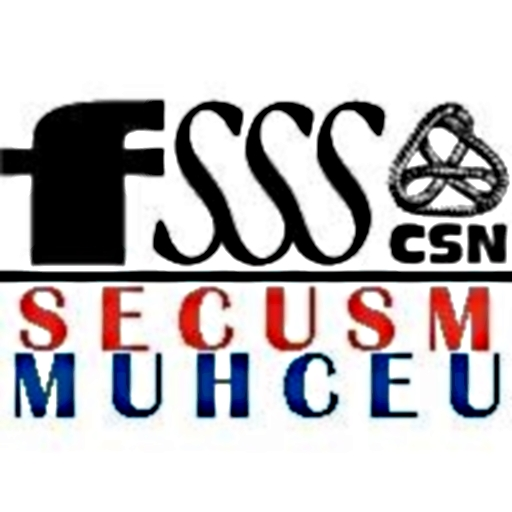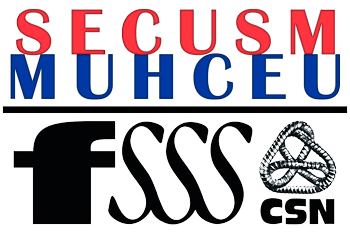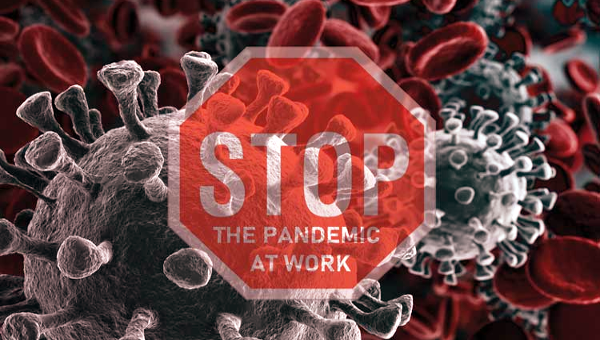
Letter to Dr Gfeller
August 21, 2020
Hello
The corona virus pandemic has exposed the many deficiencies in our health care system and we have seen the disastrous consequences of successive budget and staff cuts over the years.
Although our institution was not one of the most affected, we still had over 270 infected workers in all job categories. It should be noted that many people who are not nurses or PAB’s have been infected: administrative agents, patient transport workers, housekeeping workers, etc…
The virus has not spared anyone and some of our members have even been hospitalized in intensive care. This forces us to think deeply:
- testing protocols (who and when to test) and preventive measures were adequate?
- Do we have enough PPE?
- do we have the right PPE for a virus like COVID:
- do we in Quebec have the resources to provide what needs to be provided to our members…
We represent more than 4,500 workers in categories 2 and 3. In every job title, our members have been called upon to work and work alongside infected people who may, at times, be asymptomatic and, in most cases, had not even been tested. This resulted in major outbreaks in several locations and these outbreaks affected patients and employees. To put it bluntly, the vast majority of MUHC employees worked without ever being tested and without knowing if they were contaminated.
Our union has been demanding since April 1st that everyone in the health care system be tested once a week. See our article: https://www.secusm.org/open-letter-to-doctor-arruda/
We reiterated this request on 27 May: https://www.secusm.org/prevention-is-through-testing/
On several occasions, management replied that they were only applying the INSPQ directives. We have reason to believe that the INSPQ’s “testing” policies were established based on the availability of materials and personnel to perform the tests (swabs, laboratory equipment, etc.) and not on a science-based public health policy.
Furthermore, we also believe that the “testing” policies established based on the availability of materials and personnel do not meet the employer’s obligations under section 51 of the LSST.
The definition of mode of transmission as being limited almost exclusively to droplet-generating medical interventions was used as the basis for the limits established by the INSPQ to define and limit :
- screening tests (who and when to test)
and…
- which protective equipment is required in which situation.
However, scientific studies are increasing to indicate that the virus can also be transmitted by “aerosol” in the environment.
Here is a list of recent studies conducted at several prestigious scientific institutions:
The Lancet[1] , The Oxford Academic[2] , American Industrial Hygene association[3] , the Center for Disease Control[4], the National Academy of Science[5] , the Center for Infectious Disease[6] , the journal Nature[7] and this is only one part of the studies…
A letter signed by 239 scientists was sent to WHO[8]. This letter led WHO to produce an update of its recommendations[9].
Divergences on prevention and measures to be taken
Closer to home, we can see a difference of opinion between the Robert Sauvé Institute for Research in Occupational Health IRRST and the INSPQ.
Because of the embryonic scientific knowledge regarding the mode of transmission, the IRSST recommends that employers provide N-95 type masks at all times, based on the precautionary principle[10] [11].
The IRSST recommends that employers provide, as a minimum, air-purifying or air-supplied respirators (N95 mask) under all circumstances, whereas the INSPQ recommends them only in a limited number of situations[12], i.e., when personnel are called upon to perform acts generating aerosols or to care for an intubated user.
However, the scientific studies cited above emphasize that procedure masks protect against droplets, but not against finer airborne particles such as aerosols.
We are surprised and concerned by the fact that the INSPQ recommends, in almost all situations, the wearing of the procedure mask alone when there is scientific uncertainty about the mode of transmission and when there is a real possibility that transmission may also occur by aerosol.
The INSPQ cannot, at this stage, limit the precautions to be taken against aerosols to simply recommending protection against droplets. It is a recklessness that has an impact on our members, who are thus exposed to very serious consequences[13], including death.
We noted that on several occasions since March, the MUHC has responded to us that it was following the INSPQ’s recommendations. After reading the scientific articles mentioned above, we wonder if there is a correlation between the INSPQ’s position on the mode of transmission and the insufficient supply of N95 in institutions?
Let’s ask the question frankly: has the INSPQ abandoned its science-based mandate to adopt recommendations based on the “realistic” management of available stocks of personal protective equipment?
It is clear that, when we analyze the record of our infected members, the protective measures that have been put in place have been insufficient.
Eliminate the danger at the source
Furthermore, the main purpose of the LSST is to eliminate the danger at the source. This principle, which is fundamental to the law, combined with a precautionary principle and scientific uncertainty as to the mode of transmission, leads us to believe that workers have not been adequately protected to date.
In the absence of scientific certainty, we must adopt drastic measures inspired by a precautionary principle in order to really prevent the contamination of our employees.
The precautionary principle has been invoked by the Administrative Labour Court (TAT) on a number of occasions in the area of occupational health and safety prevention[14].
This principle was also applied in the context of the current pandemic by the Ontario Superior Court in the context of an application for an injunction by a nurses’ union[15].
In this case, the nurses sought an injunction to force the institutions to provide N95 masks given the scientific uncertainty regarding the mode of transmission. The employer argued, among other things, that there were insufficient supplies of equipment.
The judge held that the precautionary principle should apply since the mode of transmission of the virus is not yet known, after hearing contradictory expert evidence. There was therefore a lack of scientific consensus on this issue.
Section 51 of the OHSA
Employers have important health and safety prevention responsibilities under the OHSA. With regard more specifically to protective equipment, section 51 paragraph 11 requires the employer to :
51. Every employer must take the necessary measures to protect the health and ensure the safety and physical well-being of his worker. He must, in particular,
(…)
11. provide the worker, free of charge, with all the individual protective health and safety devices or equipment selected by the health and safety committee in accordance with paragraph 4 of section 78 or, as the case may be, the individual or common protective devices or equipment determined by regulation, and require that the worker use these devices and equipment in the course of work;
It is our view that the policies in place do not allow for compliance with this section.
Our requests
Given the embryonic nature of scientific knowledge about SARS-VOC-2 and the mode of transmission of the virus;
- Given that a number of recent studies demonstrate a risk of aerial transmission of the virus;
- Given that there is a real risk of aerosol transmission of the virus;
- Given the recent calls from many members of the global scientific community to address the risk of aerial transmission;
- Given that the INSPQ relies primarily on the droplet mode of transmission to issue its guidelines;
- Given that the protective equipment currently provided may be insufficient if an aerosol mode of transmission is considered;
- Given the purpose of the Act, which is the elimination of any danger at the source and the employer’s obligations under section 51 of the OHSA;
- Given that the Ontario Superior Court relied on the precautionary principle to force employers to provide N95 masks;
We ask:
- All employees must pass the N-95 leak test.
- That all employees working in a yellow or red zone have the N95 mask in addition to gloves, gown and visor.
- That N-95 masks be available in sufficient quantities at all times.
- That every health care worker be tested once a week.
Executive Committee of the MUHC employees Union – CSN
[1] https://www.thelancet.com/journals/lancet/article/PIIS0140-6736(20)31142-9/fulltext
[2] https://academic.oup.com/jid/advance-article/doi/10.1093/infdis/jiaa189/5820886
[3] https://aiha-assets.sfo2.digitaloceanspaces.com/AIHA/resources/Personal-Protective-Equipment-for-SARS-CoV-2-White-Paper.pdf
[4] https://www.cdc.gov/niosh/npptl/topics/respirators/factsheets/respsars.html
[5] https://www.pnas.org/content/117/22/11875
[6] https://www.cidrap.umn.edu/news-perspective/2020/03/commentary-covid-19-transmission-messages-should-hinge-science
[7] https://www.nature.com/articles/s41586-020-2271-3
[8] https://ici.radio-canada.ca/nouvelle/1717741/coronavirus-transmission-air-micro-goutelettes-oms-pandemie
[9] https://www.who.int/news-room/commentaries/detail/transmission-of-sars-cov-2-implications-for-infection-prevention-precautions
[10] https://www.irsst.qc.ca/bioaerosol/default.aspx
[11] https://www.irsst.qc.ca/bioaerosol/etape2.aspx
[12] https://www.inspq.qc.ca/sites/default/files/covid/2960-intervention-medicale-generant-aerosol-covid19.pdf
[13] https://academic.oup.com/brain/article/doi/10.1093/brain/awaa240/5868408
[14] Caron c. Corporation des techniciens ambulancier de la Montérégie (CETAM), 2013 QCCLP 4324 : Bombardier aéronautique inc. c. Tribunal administratif du travail, 2017 QCCS 5488. Appel rejeté : Bombardier c. Commissions des normes, de l’équité et de la santé et sécurité au travail, 2020 QCCA 315
[15] Ontario Nurses Association v. Eatonville/Henley Place, 2020 ONSC 2467.

